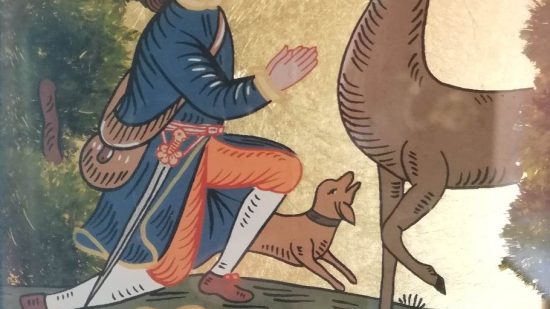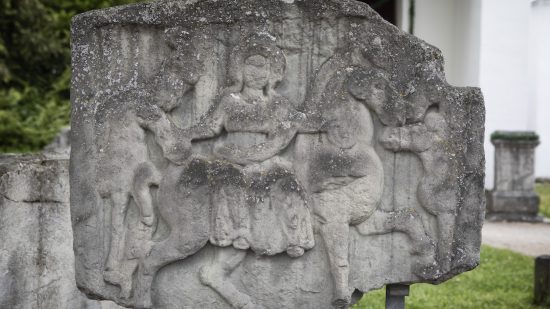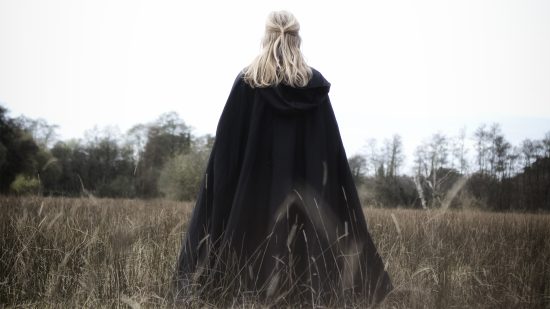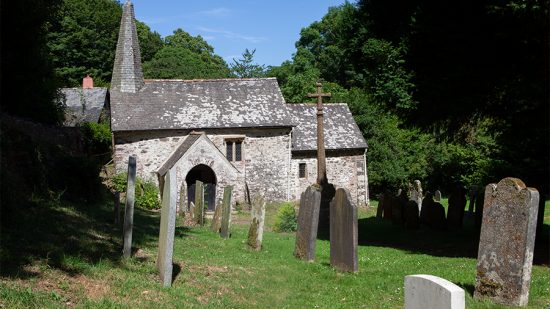The Goddess of Spring Ostara (Eostre) – Does she exist, or not?

When I once visited a small chapel in southern Germany in the spring, which was on a hilltop, overlooking the landscape, I could hardly believe what I read on an info board there. According to a legend, the chapel stood on the cult site of the goddess of spring Ostara. If there was really evidence for it, it would have been a small sensation. So I immediately made inquiries and spoke to a very nice gentleman from the local history study group. I had hoped that in some old chronicle there might be a reference to a pre-Christian place of worship. Unfortunately, the helpful gentleman could not confirm this to me, rather there is no indication that a cult site in honor of Ostara had ever been located there, or rather it is no longer possible to trace how this connection came about. The assumption is that in the past, in search of one’s own roots, everything Germanic was very popular, which unfortunately can be seen in the National Socialists, who abused the Germanic heritage for their sick ideologies.
Of course, I was disappointed when I heard this, because it would have brought a smile to my lips, if my homeland Bavaria provided the proof that the Germanic goddess Ostara really existed.
But why is the existence of Ostara in contrast to other Germanic gods disputed at all, since it is celebrated every year by thousands of neo-pagans in spring? This has to do with the fact that there is only one source that refers to a possible spring goddess named Eostre. This comes from the Anglo-Saxon monk and church historian Beda Venerabilis (Beda the Venerable). In 725 he wrote in his Latin “De temporum ratione” (On the calculation of time) that the name of the month April “Eosturmonath” is said to come from an Anglo-Saxon goddess Eostre, who was worshipped in this month. However, this is more or less Bede’s personal interpretation and not a historically proven fact.
The german cultural researcher, lexicographer, and author Jacob Grimm saw a common linguistic root in the Old High German word for Easter, Ostarun, and the Old English Eostre, and thus concluded that a goddess Ostara was once worshipped in Germany during the month of Easter. This led to the belief that Easter was named after a Germanic goddess. Of course, Christians rightfully say that it would be a bit far-fetched to claim that Christianity’s highest festival was named after a pre-Christian goddess. Nevertheless, in this context the question arises, which Jacob Grimm also asked himself why the festival, which until 325 was celebrated at the same time as the Jewish Passover, until the church found it necessary to distinguish it from the latter and set the date for the celebrations on the first full moon after the spring equinox, and from the 8th century on the first Sunday, is not derived from its proper Hebrew name “Passover”? The latter forms the basis for most of the names used in Europe for the Christian feast of the Resurrection, except in the Germanic-speaking areas of Europe, where the name is derived not from Passover but from a term rendered in modern German as Ostern and in modern English as Easter.
So is it really so far-fetched to believe that a religious festival could be based on an older mythology and, because of the cultural overlay, have taken on many of the original core elements?
The English historian Ronald Hutton writes in his book “The Stations of the Sun – A History of the Ritual Year in Britain” that two facts seem to emerge from the discussions about a possible connection between the Christian festival and a Germanic goddess. The first is that the Christian festival was known as Ostarstuopha in the Main Valley in the eighth and ninth centuries, and there were numerous variations of the name given by Bede among speakers of Germanic languages. On the other hand, the Anglo-Saxon word “eastre” signifies both the Easter festival and the season of spring, which can be associated with the words of other Indo-European languages signifying the dawn and also goddesses, such as the Greek Eos, the Roman Aurora, and the Indian Ushas. The Slavs also knew a female personification of the dawn, Zorya or Zarya-Zarenitsa, also called the red maiden. That in the pagan world view a natural phenomenon can stand for a god or a goddess is nothing extraordinary because they personified their gods and saw in a thunderstorm not only a natural spectacle, but also recognized in it their thunder god Donar or in a raven their raven god Wotan.
“It is therefore quite possible to argue that Bede’s Eostre was a Germanic dawn-deity who was venerated, appropriately, at this season of opening and new beginnings….With the removal of this shadowy deity from the canon of historical certainty, there evaporates any reliable evidence for a pre-Christian festival during the time which became March and April. It may be that there was none, the ancient inhabitants being wholly taken up with ploughing, sowing, and caring for young livestock. Alternatively, some of the later Easter rites and customs may echo practices which attended old feasts, of which we have now lost sight. Of one thing alone it is possible to be confident; that, although the timing of the feast of the Resurrection was dictated by historical accident, it could not have fallen at a more appropriate point of the European calendar, when so much in nature conduced to a mood of celebration and renewal.”
Ronald Hutton – The Stations of the Sun
As Hutton so beautifully puts it, the removal of this “shadowy deity” leads to its removal from scientific debate as well, which is the basis for all further research and knowledge. Nevertheless, there are people, such as the British philologist and language professor Philip A. Shaw who have not yet put the subject to rest. In his book “Pagan Goddesses in the Early Germanic World: Eostre, Hreda and the Cult of Matrons”, he refers to more than 150 Roman-Germanic votive inscriptions at the site of Morken-Harff, in the administrative district of Cologne, which refer to a matron cult of the Austriahenae. These were discovered only in 1958 and were therefore not yet known to many scholars of the late 19th and early 20th centuries, who vehemently opposed the existence of a possible goddess Eostre. The first element of the name Austriahenae can be etymologically connected with the name Eostre. Shaw thus points to a basic structure of these two cults. In other words, there is at least one group of wise women, or goddesses linguistically related to a possible goddess Eostre.
However, he argues that they may be narrowly regional cults rather than a superordinate goddess who was worshipped throughout the Germanic region. Regional deities were not unknown among the Celts and Germanic tribes, and even though they may have resembled each other in some characteristics, they had different colorations depending on the region, as can be seen in the matron cults.
Likewise, it seems plausible that the Anglo-Saxon Christians adopted the names of their pagan heritage for the days of the week and month, which had already become common at the time, but without making any reference to their pre-Christian past or to a goddess. They most likely adopted the local names and named their festival after the month in which it fell, which conversely does not mean that the pagans did not celebrate a goddess or had their own festivities in that month, or that this goddess never existed.
In principle, one can say that the evidence concerning pre-Christian gods and goddesses is generally thin, and that this goddess could be a regional goddess could be another explanation why there is so little evidence to support the possible existence. However, I would call the discussion anything but settled and who knows, maybe the future still holds some new discoveries that underline or refute previous theses.
My personal opinion is that it doesn’t really matter much whether this goddess really existed. Because both ancient and medieval sources agree on one point, that the pagan population lived and celebrated a strong nature worship. And just as the feast of the Resurrection is the most important feast of the year for Christians, it is not particularly unreasonable to argue that especially for a peasant people like the Germanic tribes were, whose survival depended decisively on the blossoming and the “resurrection of spring”, this time had to be at least as important and was celebrated accordingly with debauched festivities, rituals and offerings to the vegetation gods and goddesses, as can be seen with the Celts, who knew a total of three spring festivals. And whether one wants to celebrate this rebirth in the form of a personified spring goddess with the name Ostara, Eostre or in another form, is up to the individual.





